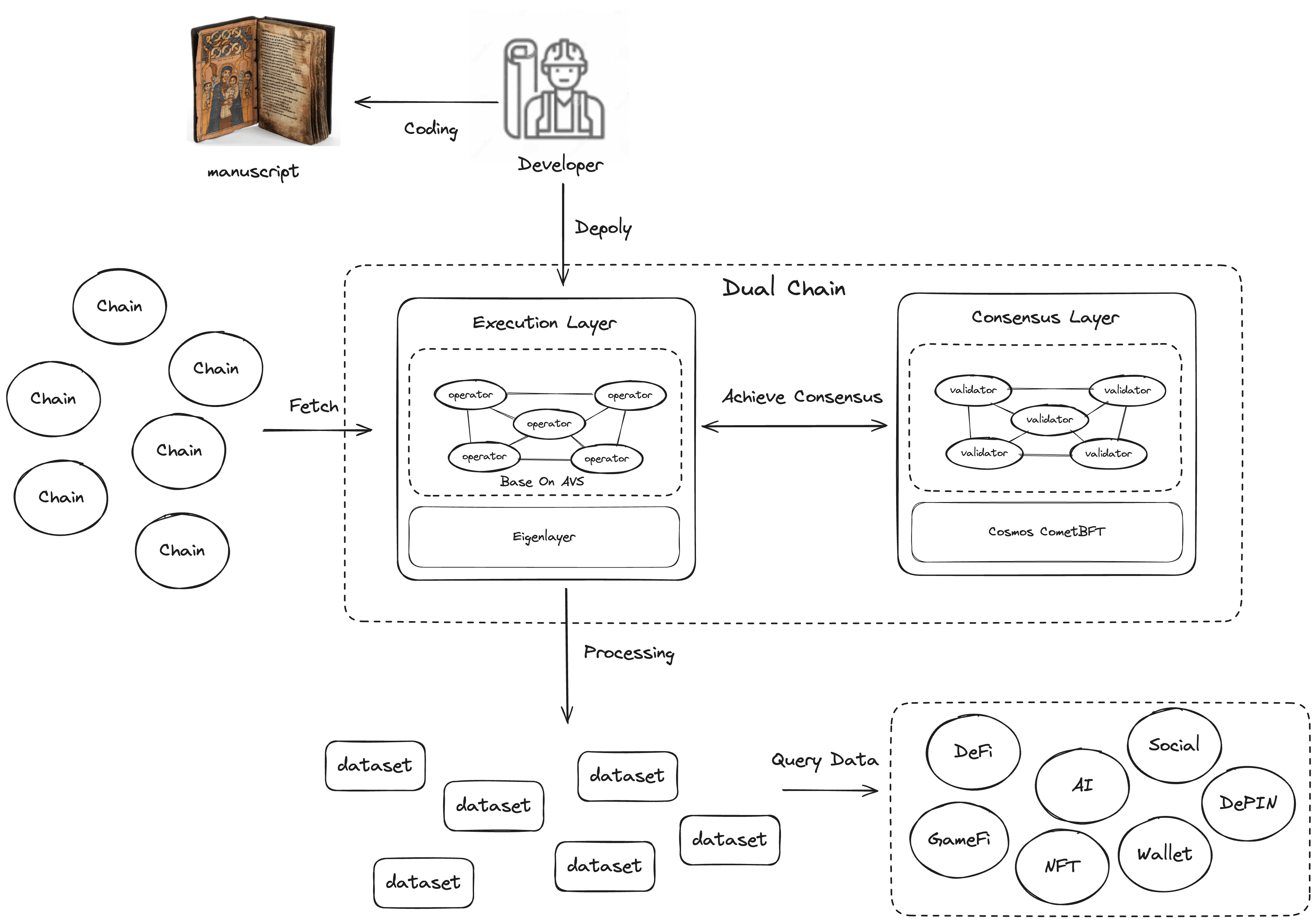Chainbase, as an innovative solution, provides remarkable answers to these challenges through its unique dual-chain architecture design.

Traditional blockchain projects often face a classic trilemma: it's challenging to find a perfect balance between performance, security, and compatibility. To enhance performance and compatibility, many projects have to compromise on security. However, Chainbase successfully breaks this deadlock by introducing a dual-chain architecture.
The core innovation of Chainbase lies in separating the consensus layer from the execution layer, forming a dual-chain system that is both efficient and secure. This architectural design not only addresses the performance bottleneck of traditional blockchains but also lays a solid foundation for future distributed data processing.
In terms of the consensus layer, Chainbase employs the field-tested CometBFT technology. The greatest advantage of this technology is its ability to provide instant finality; once data is processed and included in a block, it is regarded as final visible data without the need for additional confirmations or data restructuring. More importantly, CometBFT has successfully protected billions of dollars in assets across various blockchain networks, and its robustness and reliability have been fully validated by the market.
The execution layer focuses on large-scale data processing and complex data transformation tasks. Through data parallelism and task parallelism techniques, the execution layer can handle massive amounts of data, significantly improving overall performance and throughput. Notably, the decentralized environment built on Eigenlayer AVS enhances the system's level of decentralization and provides additional economic security guarantees, finding the best balance between high performance and high security.
From a technical implementation perspective, Chainbase's dual-chain architecture brings four significant advantages. First is performance optimization; as the largest future distributed data engine, the system needs to support high-throughput data processing. The execution layer's CVM supports parallel computing capabilities, while the consensus layer adopts CometBFT, which is optimized for performance.
Secondly, there is an enhancement in programmability. Through the redesigned execution layer, Chainbase provides a runtime environment for the standard patterns that need to be followed when converting different data sources into datasets, greatly increasing the system's flexibility and adaptability.
The third advantage is reflected in composability. The redesigned execution layer can handle data streams from multiple sources for joint processing; for example, aggregating data sources from various on-chain lending protocols can create universal lending rates, providing unlimited possibilities for cross-chain data integration.
Finally, by introducing the dual-chain architecture of Eigenlayer and Cosmos, Chainbase integrates a dual-staking model, ensuring the game-theoretic security of the super data network, which fundamentally addresses the security compromise issues of traditional public chain projects.
It is worth noting that Chainbase is not just a technological innovation, but also a deep reflection on the development direction of the blockchain industry. In the era of artificial intelligence, the value of data is becoming increasingly prominent, and Chainbase provides strong technical support for large-scale data processing and complex application scenarios through its dual-chain architecture.
In summary, Chainbase successfully combines the advantages of the consensus layer and execution layer through its innovative dual-chain architecture, achieving a perfect unity of high performance, low latency, and finality. This architecture not only enhances the network's programmability and composability but also provides higher economic security through a dual-staking model. With instant transaction finality and proven robustness, Chainbase sets new standards for blockchain performance and interoperability, providing a solid foundation for data processing and applications in the AI era.